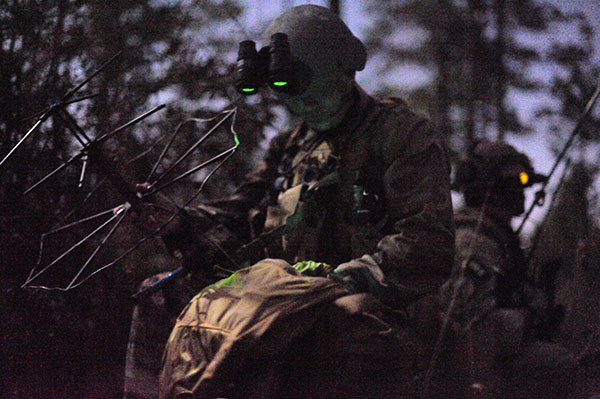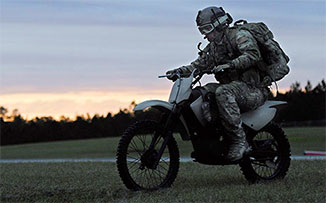A U.S. Army Special Forces soldier uses a radio during Emerald Warrior 2012.
Special Forces Communications Sergeants (MOS 18E) are a vital element of a 12-man SF Operational Detachment Alpha (ODA).
They ensure that the ODA can communicate within itself and with its command and control elements.
The Communications Sergeant, or 'Eighteen Echo', is well versed in the use of all the various electronic communications systems used throughout the army.
These include burst, wave propagation and cryptographic systems.
They setup, operate and maintain FM, AM, HF, VHR, UHF and SHF radios and associated antennae.
Communications Sergeants advise the ODA Detachment Commander on all communications matters.
18Es also further the goals of unconventional warfare operations by advising, training and supervising indigenous forces and allied forces in the use of communications systems.
There are 2 Communications Sergeants in a typical ODA, usually a more experienced senior operator who mentors the more junior 18E.
Having 2 18Es also allows for each half of a split ODA detachment to retain its communications expertise.
The 18E Special Forces Communications Sergeant course, taught by E Company, 1st Battalion, 1st Special Warfare Training Group (Airborne), US Army John F. Kennedy Special Warfare Center and School produces soldiers with the required skill set to allow them deploy with an ODA.
The course conceits of a 14 week Program of Instruction (POI) which includes classroom instruction, written exams and practical exercises.
The course culminates with MAX GAIN, a field exercise which tests the students ability to apply what they have learned in a tactical scenario.
Training includes the use of various satellite communications (SATCOM) devices such as the AN/PRC-117G, AN/PSC-5C and AN/PSC-5D radios.
They also train in the use of high frequency radio systems such as the AN/PRC-137 and are taught Antenna Theory and Radio Wave Propagation.
Other systems covered include the AN/PRC-119F and AN/PRC-148 (Multiband Inter/Intra Team Radio (MBITR).






